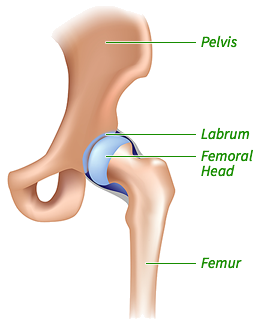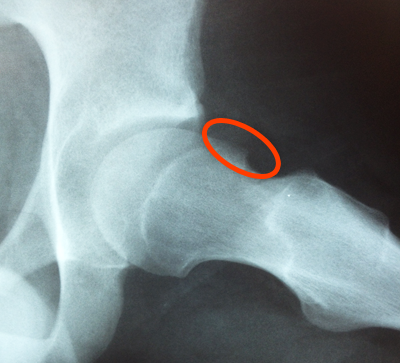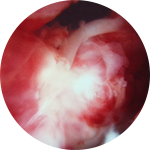Conditions Treated
Hip arthroscopy involves several small incisions around the hip that allow a small camera and instruments access to the hip joint. This minimally invasive procedure allows for outpatient surgery, very little scarring, faster recovery, prompt rehabilitation, and a quicker return to activities. This animation from the Hospital for Special Surgery is a great overview of hip arthroscopy.
Before hip arthroscopy, a traditional open procedure was utilized which required a large incision and dislocation of the hip. This had the potential of causing more soft tissue damage as well as increased complications, bleeding and pain.



 Sometimes loose bodies – typically from cartilage or bone – can cause instability of the hip joint. This can lead to a sudden, sharp pain in the hip, sometimes causing a fall.
Sometimes loose bodies – typically from cartilage or bone – can cause instability of the hip joint. This can lead to a sudden, sharp pain in the hip, sometimes causing a fall. The iliopsoas tendon is one of the main flexors of the hip. Irritation of this tendon, called Iliopsoas tendonitis, can be a common source of hip or groin pain caused from an injury, overuse, or irritation from a total hip replacement.
The iliopsoas tendon is one of the main flexors of the hip. Irritation of this tendon, called Iliopsoas tendonitis, can be a common source of hip or groin pain caused from an injury, overuse, or irritation from a total hip replacement. Synovitis is an irritation or inflammation of the lining inside the hip joint, commonly seen with other problems inside the joint. Synovitis is treated with debridement using specialized shavers.
Synovitis is an irritation or inflammation of the lining inside the hip joint, commonly seen with other problems inside the joint. Synovitis is treated with debridement using specialized shavers. Hip arthroscopy can trim out the unstable cartilage, or in some cases perform a microfracture of the bone to stimulate the growth of new cartilage.
Hip arthroscopy can trim out the unstable cartilage, or in some cases perform a microfracture of the bone to stimulate the growth of new cartilage.